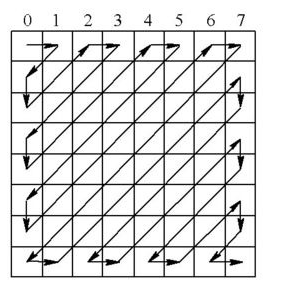

Lucene系列(二)int的变长存储与zigzag编码
source link: http://huyan.couplecoders.tech/lucene/%E6%90%9C%E7%B4%A2%EF%BC%8Cbyte/2020/10/04/lucene%E7%B3%BB%E5%88%97(%E4%BA%8C)int%E7%9A%84%E5%8F%98%E9%95%BF%E5%AD%98%E5%82%A8%E4%B8%8Ezigzag%E7%BC%96%E7%A0%81/
Go to the source link to view the article. You can view the picture content, updated content and better typesetting reading experience. If the link is broken, please click the button below to view the snapshot at that time.
lucene 代码量还是比较多的,在没有看的很明白的情况下,先写一写新学到的工具类的一些操作吧~也是收获很多。
在 lucene 写入索引文件时,为了节省空间,经常会对数据进行一些压缩,这篇文章介绍一种对 int, long 类型有用的压缩方式。即变长存储。
它在 lucene 中的应用十分广泛,有事没事就用一下,因此为了熟练的理解代码,我们还是来一探究竟吧~
在 lucene8.7.0 版本的代码中,它没有单独定义成类,可能是因为是一个小的功能点吧~
对变长数据的写入实现在org.apache.lucene.store.DataOutput#writeVInt中,对变长数据的读取实现在org.apache.lucene.store.DataInput#readVInt.
什么叫做变长存储?我们以writeVInt为例,看看注释:
Writes an int in a variable-length format. Writes between one and five bytes. Smaller values take fewer bytes. Negative numbers are supported, but should be avoided. VByte is a variable-length format for positive integers is defined where the high-order bit of each byte indicates whether more bytes remain to be read. The low-order seven bits are appended as increasingly more significant bits in the resulting integer value. Thus values from zero to 127 may be stored in a single byte, values from 128 to 16,383 may be stored in two bytes, and so on.
简单翻译一下:
以可变长度格式写入一个整数。写入 1-5 个字节。越小的值占用的字节越少。支持负数但是尽量别用。 VByte 是正整数的变长格式,每个 byte 的高位用来标识是否还有更多的字节需要读取。低位的 7 个 bit 位代表实际的数据。将逐渐读取到的低位附加作为越来越高的高位,就可以拿到原来的整数。
0~127 只需要一个字节,128~16383 需要两个字节,以此类推。
从这里看到,变长整数存储的压缩率,是和数字大小有关系的,数字越小,压缩率越高,如果全是最大的 int, 反而需要更多的字节来存储。
我们实现一个简单的工具类,能实现上述的变长存储 (lucene 代码 copy 出来), 之外提供一些辅助我们看源码的方法。
public class VariableInt {
/**
* transfer int to byte[] use variable format
*/
public static byte[] writeVInt(int i) {
int bytesRequired = bytesRequired(i);
byte[] res = new byte[bytesRequired];
int idx =0;
while ((i & ~0x7F) != 0) {
res[idx++] = ((byte) ((i & 0x7F) | 0x80));
i >>>= 7;
}
res[idx] = (byte) i;
return res;
}
/**
* transfer byte[] to int use variable format
*/
public static int readVInt(byte [] vs) throws IOException {
int idx = 0;
byte b = vs[idx++];
// 大于 0, 说明第一位为 0, 说明后续没有数据需要读取
if (b >= 0) return b;
int i = b & 0x7F;
b = vs[idx++];
i |= (b & 0x7F) << 7;
if (b >= 0) return i;
b = vs[idx++];
i |= (b & 0x7F) << 14;
if (b >= 0) return i;
b = vs[idx++];
i |= (b & 0x7F) << 21;
if (b >= 0) return i;
b = vs[idx];
// Warning: the next ands use 0x0F / 0xF0 - beware copy/paste errors:
i |= (b & 0x0F) << 28;
if ((b & 0xF0) == 0) return i;
throw new IOException("Invalid vInt detected (too many bits)");
}
/**
* compute int need bytes.
*/
public static int bytesRequired(int i) {
if (i < 0) throw new RuntimeException("I Don't Like Negative.");
if ((i >>> 7) == 0) return 1;
if ((i >>> 14) == 0) return 2;
if ((i >>> 21) == 0) return 3;
if ((i >>> 28) == 0) return 4;
return 5;
}
}
除了读取写入意外,提供了一个计算 int 数字需要几个 byte 来存储的方法。在我们 debug 源码时,可以帮助我们分析写入的索引文件。
VariableLong 的代码就不贴了。和 Variable 基本相同,只是变长的长度从 1-5 变成了 1-9 而已。
zigzag 编码
在 Lucene 实现的 DataOutPut 中,我们可以看到writeZint(int i)方法,经过了解,它使用 zigzag 编码+变长存储来存储一个整数。
什么是 zigzag 编码?
首先我们回顾一下计算机编码:
- 原码:最高位为符号位,剩余位表示绝对值;
- 反码:除符号位外,对原码剩余位依次取反;
- 补码:对于正数,补码为其自身;对于负数,除符号位外对原码剩余位依次取反然后+1。
为了方便及其他问题,计算机使用补码来存储整数。
那么我们的变长整数就有一个问题。他对于负数很不友好。
- 1 这个 int 整数,本身存储使用 4 个字节,通过上文的变长编码,使用一个字节即可。
- -1 这个 int 整数,他的补码为:
11111111111111111111111111111111, 也就是说全部是 1. 你这时候用变长编码来存储,需要 5 个字节,压缩的目的达不到了。反而多占了空间。
那么基于一个共识:小整数用的多,因此需要变长编码. 小的负整数也不少,变长编码会压缩率不高甚至反向压缩.
因此诞生了 zigzag 编码,它可以有效的处理负数。它的底层逻辑是:按绝对值升序排列,将整数 hash 成递增的 32 位 bit 流,其 hash 函数为 h(n) = (n « 1) ^ (n » 31),
hash 函数的作用如图所示:

设想一下这个 hash 函数做了什么?
对于小的负整数而言:
- 左移 1 位可以消去符号位,低位补 0
- 有符号右移 31 位将符号位移动到最低位,负数高位补 1,正数高位补 0
- 按位异或 对于正数来说,最低位符号位为 0,其他位不变 对于负数,最低位符号位为 1,其他位按位取反
那么-1 的表示变成了00000000000000000000000000000001, 比较小,适合使用变长编码了。
1 的表示变成了00000000000000000000000000000010, 虽然增大了一点,但是仍然很小,也适合使用变长编码了。
总结一下:
zigzag 编码解决了使用变长编码时小的负整数压缩率太低的问题,它基于一个共识,就是我们使用的小整数(包括正整数和负整数) 是比较多的。因此将负整数映射到正整数这边来操作。
对应表是:
zigzag 实现
这个 zigzag 的实现比较简单,在上面已经实现了变长编码的基础上。只需要实现一个简单的 hash 函数就好了。
/**
* transfer int to byte[] use zig-zag-variable format
*/
public static byte[] writeZInt(int i) {
// zigzag 编码
i = (i >> 31) ^ (i << 1);
return writeVInt(i);
}
/**
* transfer byte[] to int use zig-zag-variable format
*/
public static int readZInt(byte[] vs) throws IOException {
int i = readVInt(vs);
return ((i >>> 1) ^ -(i & 1));
}
本文简单介绍了。
- 使用变长编码来对整数进行压缩,对于小正整数能取得不错的压缩率。
- 使用 zigzag 编码对整数进行编码,可以解决掉变长编码对于小负整数压缩率低的难点。
因此,当你确认你的待压缩数字,都是比较小的正负整数,就使用 zigzag+变长编码来进行压缩吧,压缩率 25~50%还是可以做到的。
很多需要序列化的开源程序,都是用 zigzag+变长编码来进行整数的压缩,比如 google 的 protobuf, apache 的 avro 项目,apache 的 lucene 项目,都在一些场景使用了这套连招,快快使用吧~.
最后,欢迎关注我的个人公众号【 呼延十 】,会不定期更新很多后端工程师的学习笔记。
也欢迎直接公众号私信或者邮箱联系我,一定知无不言,言无不尽。

以上皆为个人所思所得,如有错误欢迎评论区指正。
欢迎转载,烦请署名并保留原文链接。
联系邮箱:[email protected]
更多学习笔记见个人博客或关注微信公众号 < 呼延十 >——>呼延十
Recommend
About Joyk
Aggregate valuable and interesting links.
Joyk means Joy of geeK